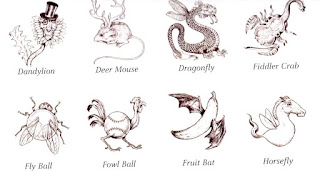I once sent a posting to Humanist about objects and electronic text editing and as the thread progressed I was reminded of a formulation from Owen Feltham: "Contemplation is
necessary to generate an object, but action must propagate it."
The two ways (vita contemplativa and vita activa) bring to mind a statement by Jerome McGann in his essay "The Rationale of Hypertext"
To the imagination, the materialities of text (oral, written, printed,
electronic) are incarnational not vehicular forms.
To be found in
Electronic Text: Investigations in Theory and Method. Ed.
Kathryn Sutherland. Oxford: Clarendon Press, 1997 (p. 19).
I am intrigued by the possibilities of recasting McGann's exclusionary
dichotomy into a pair of allied pursuits (incarnation-contemplation and
vehicle-action). The question takes on a hermeneutical hue: just where
does the encounter between the horizon of the reader and the horizon of
the author take place?
The answer may require a whole (social) renegotiation of what it means to
contemplate versus to act upon a text. I suspect that the vexed question
of the relations between powers of abstraction and embodied knowledge is
at play.
The relations are not likely to be a one-way street. And this has bearing
on what is involved in the telos of editing. I turn to Julia Flanders,
"The Body Encoded: Questions of Gender and the Electronic Text" (which we
find p. 129 in
Electronic Text: Investigations in Theory and Method) for
a recovery of a history of what were deemed the stakes in editing. She
draws on Stephanie H. Jed
Chaste Thinking: The Rape of Lucretia and the
Birth of Humanism (1989) to trace and critique a spirit/flesh dichotomy
at play in textual editing:
The organizing terms of this relationship revolve around a familiar binary
of body and spirit: each physical text, the manuscript or printed book, is
a particular concrete carrier of a universalized and disembodied
textuality, the "text of the author" which may be fully represented in one
physical object, in many, or in none at all. Within this schema the
physical object, in a manner familiar to any student of neoclassical
aesthetics, is subject to corruption and debasement, its very physicality
and particularity drawing it towards the realm of the monstrous and the
deviant. The task of the scholar and editor, then, is to discern the
universal text within the various documents which instantiate it, and by
patient study and labour produce a new — but also originary and
authoritative — witness which perfectly transmits the "text of the
author". In Jed's example, these texts are the foundational documents by
which republican Florence was to construct a public ideology based on an
assertion of lineage from ancient republican Rome (p. 75)
Of course the story does not stop here.
And so for day 2402
11.07.2013











